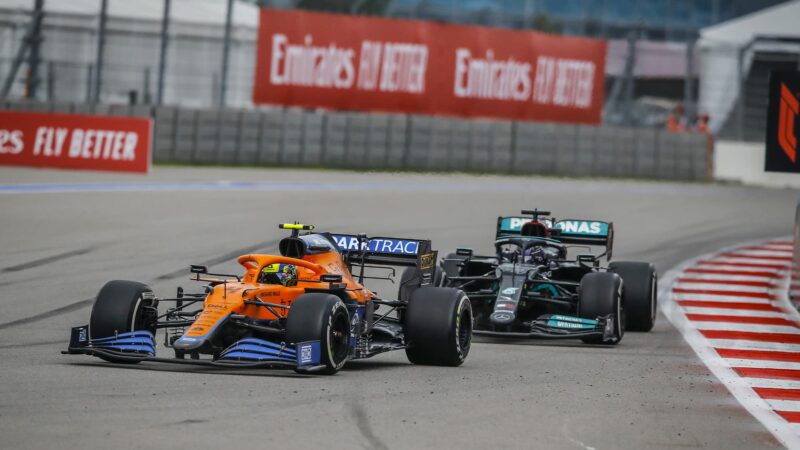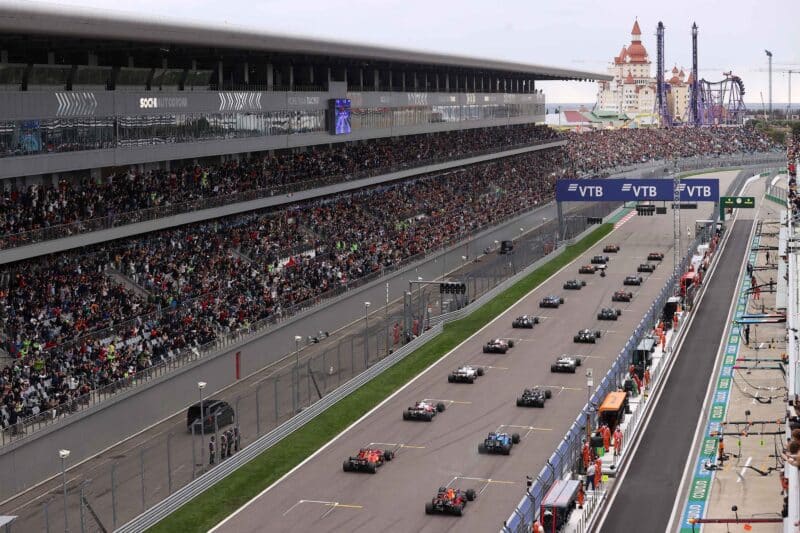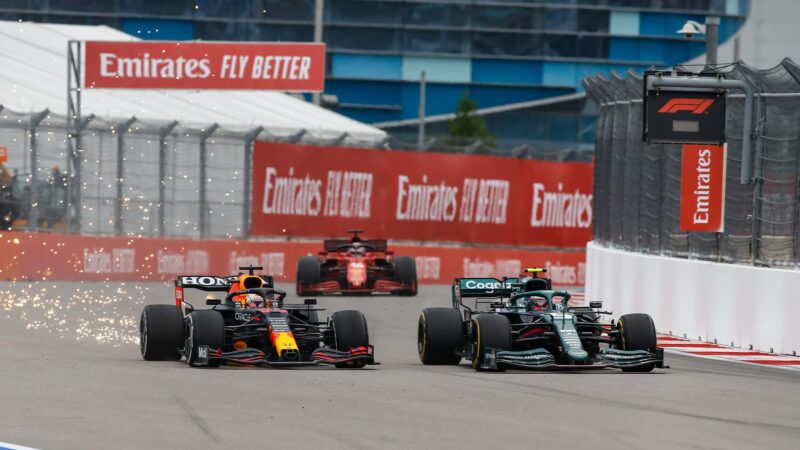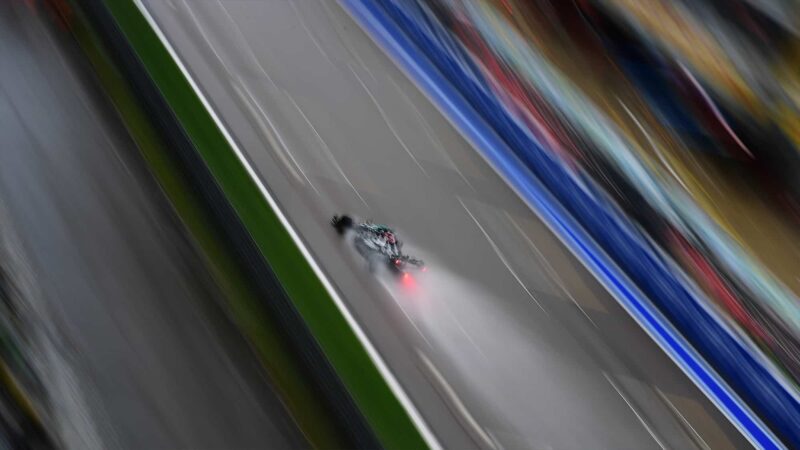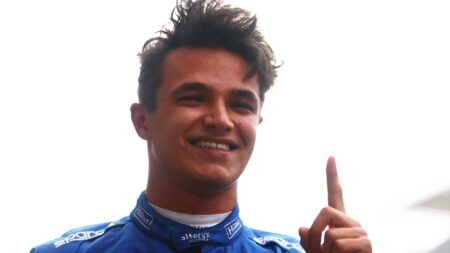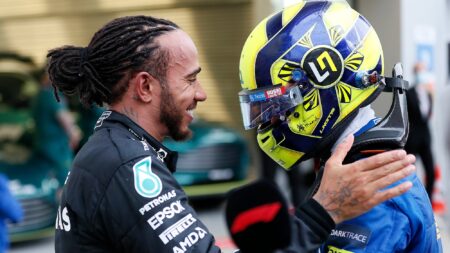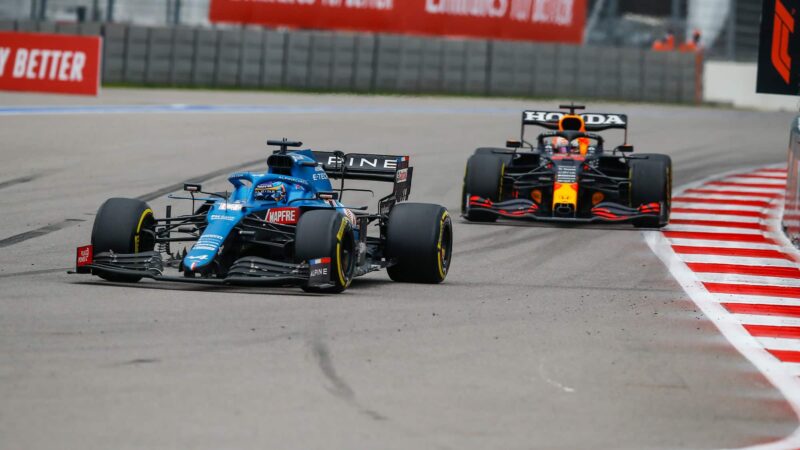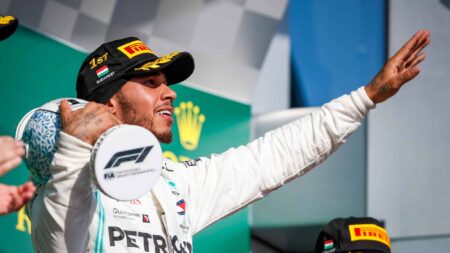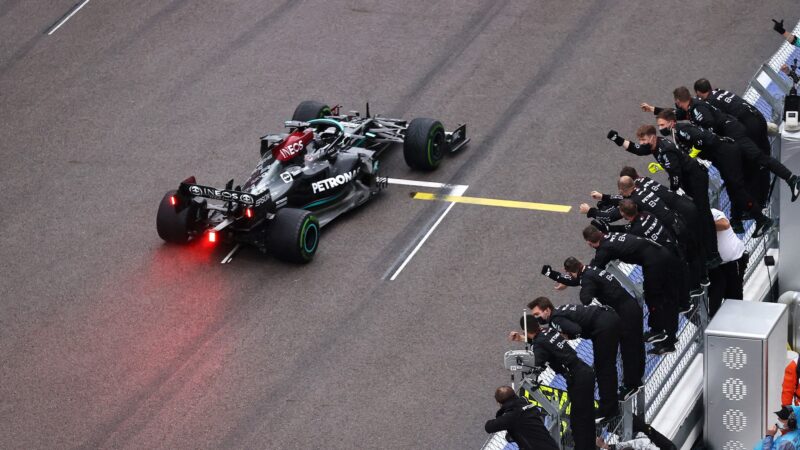Mercedes, trying to win a championship, didn’t feel as carefree. Hamilton and Bottas stayed out after their banker laps and did a prep lap for another flyer. Red Bull covered Mercedes with Perez. Pretty much everyone else pitted for slicks after posting their inters time.
That’s how Norris set his first pole position from Carlos Sainz’s Ferrari and Russell. Hamilton’s earlier lap stood only as fourth-quickest, Bottas seventh.
Just as would be the case on Sunday, there was no obvious right answer in the moment the decisions had to be made.
Front wing flap
Sochi is usually a rear-limited track. But at such cool temperatures as this – the track was 23C at the start – the front left takes enough stress that it is prone to graining. The softer the compound the worse the problem.
Mercedes and McLaren added some front flap to try to help keep that graining at bay for the medium compound tyres they’d chosen for Hamilton and Norris respectively.
Starting Tyre Choice
The medium (C4) gave more traction off the grid and was faster for about four laps. Thereafter its graining left-front made the more robust hard (C3) the faster tyre. The top five all chose the medium, with Fernando Alonso and Perez taking the hard, along with the back row-starting Verstappen and Leclerc.
So all those choices played out like they did. The right-hand side of the grid had more rubber down than the left, allowing Sainz to be faster away than Russell and to hold him out of Norris’ tow. As Norris then moved right to block the fast-starting Hamilton, Sainz went the other way and slipstreamed his Ferrari into the lead. Hamilton was boxed in and completed the first lap in seventh.
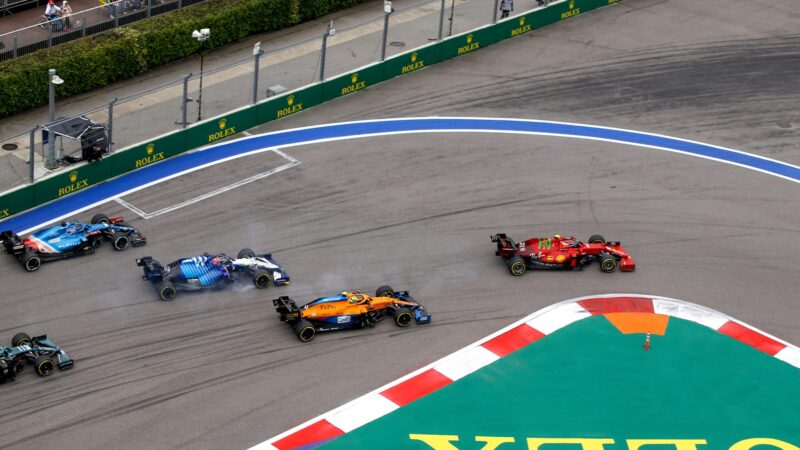
Sainz leads into Turn 2 on the first lap of the race
DPPI
Russell’s Williams wasn’t anything like the third-fastest car, was around 1sec per lap slower than a McLaren. But it was running in third place and was fast down the straights. So Sainz and Norris escaped from the pack. Hamilton, in sixth, could make no move on Daniel Ricciardo’s McLaren ahead of him. Just as at Monza, he didn’t have enough end-of-straight advantage.
Verstappen made great progress from the back, passed Bottas on lap six with barely any resistance from the Mercedes driver and before the race was too old was only three places behind Hamilton.
Sainz led until he overworked his front-left, allowing Norris to slipstream past and into the lead. Sainz pitted soon afterwards. With this and Russell’s similarly early stop, Norris and Ricciardo led a McLaren 1-2, with Hamilton frustrated in his attempts at finding a way by.
